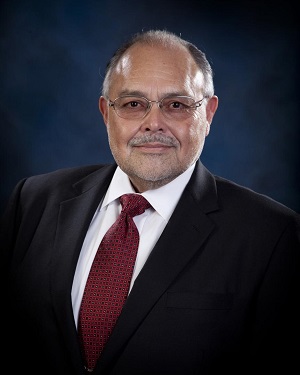
Dr. Ruben Alejandro Photo courtesy of the Welasco Independent School District
A year ago, Superintendent of the Weslaco Independent School District (WISD) Ruben Alejandro signed up his district for a pilot program with digital learning company myON—which provides access to e-libraries for schools—because he wanted students “to have access to reading 24/7, anytime, anywhere.” Alejandro had a vision to accelerate early learning across the community and empower every student within the district with the necessary technological tools for a competitive 21st–century education.
Signing up his district for unlimited access to myON, which enables anyone with an account to access the thousands of books on the digital library, is one of his “Zero to Three Weslaco Reads” initiatives that provides his school district with access through myON; for community outreach and to spread the news, Alejandro partnered with 21 daycares across his community, as well as three Head Start programs, the public library, and the community hospital.
“We wanted children to be exposed to the myON reading platform before birth,” said Alejandro, “so we told the [Welasco] community that expectant mothers should also be reading to their children.”
Alejandro’s focus on early learning (ages zero to three before children enter the school system) is indicative of a larger, nationwide trend toward early learning, starting with The American Academy of Pediatrics (AAP) recent “announcement of a new policy that recommends parents to read to their children from birth, emphasizing the importance of literacy during early childhood development. It was also that topic at this week’s Preschool National Summit (on August 5) keynoted by New York City Mayor Bill de Blasio that “reinforced the educational, social, and economic needs for expanding quality early learning to improve outcomes for children, families, and communities throughout the nation,” according to Scholastic’s press release.
By providing access to books and reading before a child enters the school system, Alejandro hopes to reach very young students in order to provide the opportunity to accelerate the student’s fluency, comprehension, and critical thinking skills.
The learning platform is free for students, parents, and community members to access. Provided with a user ID, anyone can log in to the Web-based platform. Todd Brekhus, president of myON, notes that myON can be accessed through its free app on “pretty much any platform you can think of so you can download books” on smartphones, tablets, and laptops. Though internet access is required to download books—up to 20 at a time—Brekhus says the books can be read offline.
The e-library includes approximately 7,000 titles from academic and non-academic publishers with a focus on K-8 readers. Brekhus goes on to explain that what sets myON apart from a regular e-library platform is that it “has a lot of built-in supports and built-in tracking. Teachers can go in there and create a playlist for their students’ assigned reading. [It also tracks] the amount of books that are opened and how much time students spend reading.” In addition, the system allows educators to track students’ reading comprehension. “There are quizzes and tests embedded at the end of chapters or the ends of the books.”
For English Language Learners (ELL), Brekhus says “a lot of the books they have in myON are in English and Spanish… [there is also a] text-to-speech [function] which will translate from English to Spanish and is one of several different multimedia supports that help the student read and learn English.”
One compelling reason why WISD teamed up with myON was the high population of ELLs in the school’s district. Alejandro praises the platform’s tracking features, because “it checks the reading level [of the child logged in] and ties it to a Lexile score,” an easy tracking metric for teachers and administrators.
Javier Salinas, executive director for WISD’s Elementary Curriculum, notes that since the introduction of the myON pilot in 2013, students have not only “read half a million books this [school year and summer], but our Lexile levels have been growing up to about 70 to 90 points for kids at certain grade levels.”
Higher Lexile metrics aren’t the only component of myON’s success in the school district. Alejandro explains part of myON’s appeal is its adaptability to fit into his school district’s BYOD (Bring Your Own Device) approach.
“One of the things I found out is that kids usually have the latest and greatest [technology] themselves,” he says. “They always have a phone in their pocket so that’s why BYOD makes the most sense.”
Though, knowing a high percentage of the population is economically disadvantaged, Alejandro says WISD will “usually allocate about a million dollars every year to do computer replacement. We upgrade our system every few years, so we have [a limited number] of tablets available that kids can check out overnight or over the weekend for special projects.”
This year, WISD’s budget allowed the district to purchase myON on a district-wide basis for the cost of $300,000—versus purchasing the platform on a campus-by-campus basis. Seeing the potential to reach out to community members who already owned smartphones and tablets, Alejandro and myON came to an agreement—and myON provided a pilot program for the entire of community of Weslaco to use as well.
The district is at the end of the first year of a three-year program, but they are already thinking of expanding the program to high school students. Tracking metrics and Lexile scores will continue, but the e-library seems to be a success in terms of scores and usage .
“Just the fact that it’s on a digital device or tablet, that in itself promotes excitement in reading,” says Alejandro.
Mythili Sampathkumar is a UN reporter and freelance journalist based in NYC and loves visiting old libraries and used book stores in every city she travels. Follow her on Twitter @RestlessRani.


